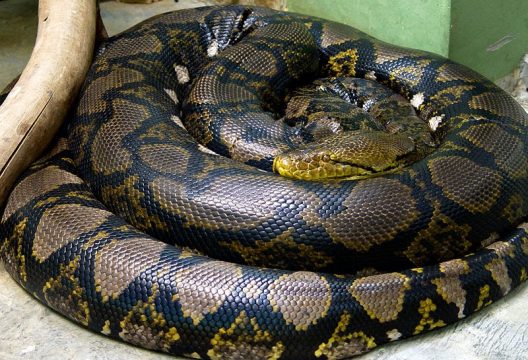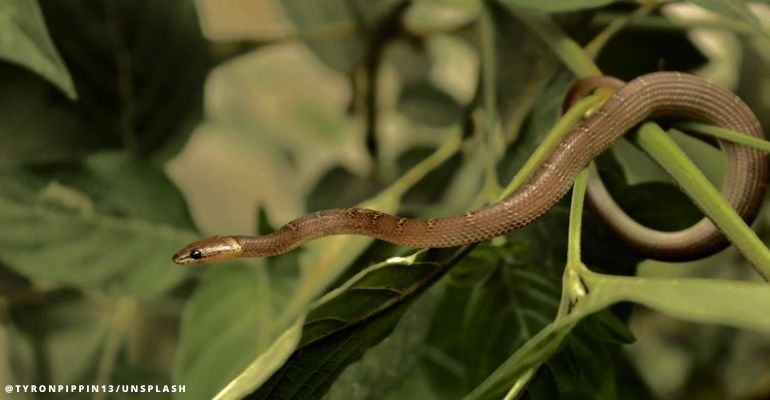This #WorldSnakesDay, let’s get to know the three non-poisonous snakes you can find in the Philippines. Yup, you heard that right! Not all snakes are poisonous.
In fact, out of the 3,000 plus species of snakes discovered on the planet, about 600 species are venomous, and only about 200 (7%) can fatally injure or kill a human. In the country, these venomous snakes include the Philippine Cobra, Wagler’s Pit Viper, Yellow-lipped Sea Krait, and Lake Taal Snake.
Check out below the three non-venomous snakes in the Philippines.
Brahminy Blind Snake
Brahminy Blind Snake, also called the Flower Pot Snake, is a non-venomous snake primarily found in Africa and Asia. They closely resemble earthworms, which they are often mistaken for, as they are characterized by a blunt head, a cylindrical body encased in smooth, shiny scales, and a short tail. An adult may grow up to 30 cm (12 in) in total length, though some may reach up to 1 metre (3.3 ft).

They are known fossorial (i.e., burrowing), but you can spot them on the ground at night or after heavy rains, and occasionally, up high in trees. The flowerpot snakes (scientific name Ramphotyphlops braminus) are an all-female species and identified as parthenogenetic, meaning they do not require fertilization to produce offspring. Part of its diet is larvae and eggs of termites and ants, as well as other soft-bodied arthropods and their eggs.
Common Wolf Snake

The Oriental wolf snake, scientifically known as Lycodon capucinus, is part of the colubrid snake family commonly found in the Indo-Australian Archipelago. It is a nonvenomous snake named after its large teeth in both jaws. This small, drab species with a metallic sheen primarily feeds on lizards, frogs, and geckos and can grow up to less than a metre (barely 3 ft). Its body is usually painted in shades of jet black, reddish-brown, or dark grey with speckles, blotches, and white or pale yellow spots.
Reticulated Python
Meet the Reticulated Python (scientific Malayopython reticulatus), a python species commonly found in South and Southeast Asia and currently holds the world’s longest snake title. So far, the longest discovered has a length of 9.6 metres (31.5 ft). It’s also one of the heaviest and the best swimmers in the species. This cold-blooded snake is predominantly nocturnal and can amazingly produce heat whenever the temperature drops. It has smooth dorsal scales that are arranged in 69-79 rows at midbody.

The Reticulated Python is popular in some countries for its skin and uses in traditional medicine and even pets. Apparently, they are good at controlling pests such as rats in the house. While they are non-venomous, their way of stunning prey is something you should not take lightly. Typically, they feed on smaller mammals. However, there are some reported cases where they have attacked humans.
~
While not all snakes can be the death of you, standing a safe distance from these slimy creatures is still the best approach to take. If you happen to spot one, especially at home, immediately call your local emergency hotline so they can professionally and safely extract them. And if ever you are bitten (God forbid!), you should call 911 or your local emergency number right away. – WhatALife.ph
Do you know any cool facts about snakes? Please share them below in the comments!
Also Read: Stay Trendy: Check Out 2021’s Best Midyear Top Trending Buys



Leave a Reply